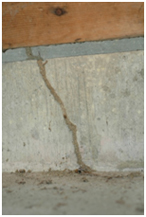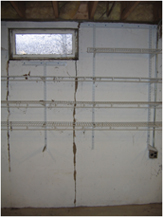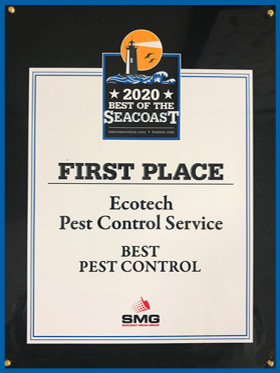Termites are the insect that home owners should most dread because undetected they have the potential to do thousands of dollars in structural damage to the home. There is only one species found in the North East part of the country, the eastern subterranean termite (Reticulitermes flavipes). The termite worker is very small and will look like a white ant (fig 3). The reproductive members of the colony are new kings and queens and are known as “swarmers” because in the spring they will all leave or swarm out of the nest all at the same time to start new colonies. The swarmers are very small, brown, and start out with four wings of the same size (fig 3). The wings are dropped later once a suitable nest site is found. This species of termite lives in the soil feeding off of dead tree roots year round, and in the warmer months consuming dead wood on the surface of the ground. Most of our homes are constructed of “dead wood”, and to a termite that means food, which is why they are so destructive. Termites nest in the soil and must return to the nest on a regular basis. They cannot walk around out in the open like an ant or other insects do because they aren’t able regulate the moisture in their bodies without suffering dehydration. Regular trips into the nest site under the soil prevent dehydration. The termites extract moisture from the soil and to facilitate the journey they make tubes out of soil about as wide as a pencil, that run up foundation walls to the wooden parts of your home Fig 1 & 2.
Treatment for Termites
There are two
methods for treating termites.
The first involves using bating stations around the foundation. These stations do not lure the Termites to them but instead rely on the termites to run into them a lot like fishing. The baiting stations can be effective but take a long time - sometimes years to solve the problem. Another method is to safely inject a liquid insecticide in the soil around the foundation were termites will try and enter the home. This way they cannot avoid it and the results are quick. The liquid insecticide used by Ecotech Pest Control also acts like bait. Insects passing through the insecticide bring it back to the nest where it kills termites in the nest site.
IPM for Termites
The most important thing a home owner can do to help prevent termites is to make sure there is no wooden part of the home touching the soil. Look at your siding around the outside of the entire home and pull the soil or mulch away from the side at any spots that make contact. You will need to expose 6 inches or more of the foundation between the soil and siding. If wooden steps touch the ground put a cement patio block under them to create a barrier. During our inspection we will also point out if there are other areas around your home where additional IPM practices may help prevent termites from damaging your home.













